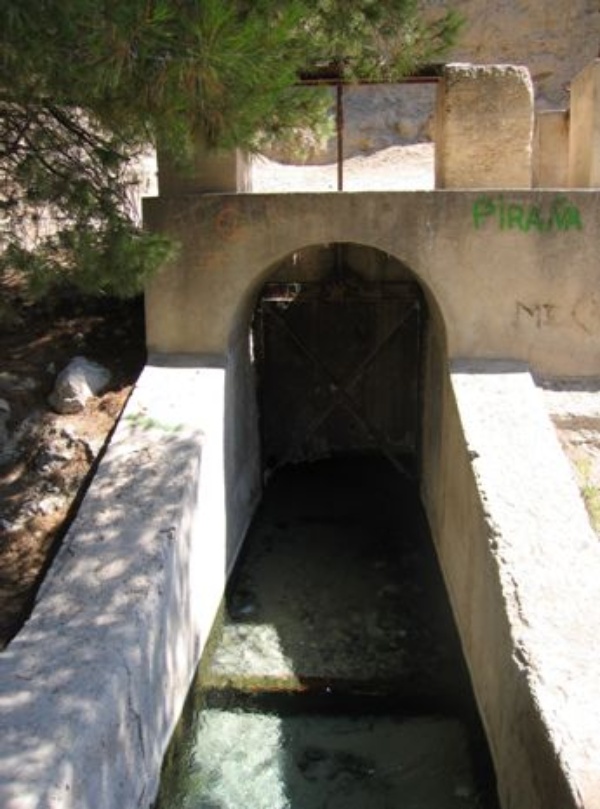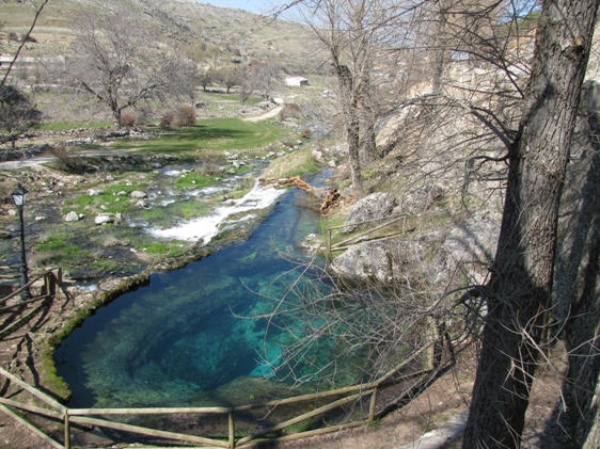Based on criteria established in the Royal Decree 1514/2009, of October 2 , which regulates the protection of groundwater against contamination and deterioration (nitrates and pesticides) the corresponding evaluation reports of the chemical state of the groundwater bodies are generated:
Note: From the attributes table of the viewer itself, the data of the groundwater quality network can be exported to CSV format (text separated by commas)
In the 70s, the IGME began to establish and manage groundwater control networks in Spain, through systematic and continuous observation campaigns of both piezometry and water quality, including groundwater as part of them of the Segura basin.
Subsequently, from 1995, this control has been carried out jointly with the former General Directorate of Hydraulic Works and Water Quality, today the General Directorate of Water, of the Ministry of Agriculture, Food and Environment, at the same time that together with the Hydrographic Confederations, a review and expansion of the existing networks is being carried out.
With the entry into force of the Framework Directive (Directive 2000/60 / EC) , and of the modification of the Water Law of 1985, with Royal Legislative Decree 1/2001. in its article 92 ter. Section 2, it is established that in each river basin monitoring programs must be established for the state of the waters, which allow obtaining a general, coherent and complete overview of each of the water bodies that are defined. These monitoring programs began to be officially operational, as of December 31, 2006, pursuant to section 3 of the eleventh additional provision of the aforementioned Royal Legislative Decree 1/2001
In order to comply with the aforementioned obligation to establish monitoring programs for the state of groundwater, the former Ministry of Agriculture, Food and Environment carried out work to adapt the primitive official control networks for the different river basin districts . Analyzing the state of operation of the primitive stations, and selecting new locations for the location of new control points, including new wells.
As a consequence of the adaptation of this incipient network to monitor the state of groundwater bodies, at the level of different river basin districts, four campaigns were carried out from the end of 2005 to the end of 2008. sample and chemical analysis of water, the results of which are set out below:
With the establishment of the Segura Integrated Groundwater Quality Control Network (RICCASS) the Segura Hydrographic Confederation improved the continuous and global monitoring of the control and knowledge of groundwater bodies, in order to preserve and control its chemical quality within its jurisdiction, adapting to the requirements established by current legislation, based on Royal Decree 1514/2009, of October 2 , which regulates the protection of groundwater against pollution and deterioration, which transposes Directive 2006/118 / EC (Groundwater Framework Directive : "DAS").
Since these dates, the campaigns from 2009 to mid-2013 have been carried out, resulting in 8 campaigns with which, to a large extent, it has been possible to sample all the defined underground water bodies, for which, some actions They have consisted of the construction and qualification of new control wells for an official quality network, a process that is always under continuous renewal. The results for said period are set out below:
For the first semester of 2014, emergency actions were carried out, based on the work carried out by the Segura Hydrographic Confederation laboratory, with much smaller objectives for a basic control network of 45 seasons (budgetary reasons); notwithstanding which, very relevant results have also been obtained in the control and monitoring of some critical points selected from the previous campaigns; works contemplated in the following report:
As of the second semester of 2014, work has started on a new technical assistance contract, the results of which are published below:
With the approval of the Royal Decree 817/2015, of September 11th , by which the criteria for monitoring and evaluating the state of surface waters and environmental quality standards are established, a general regulatory framework is established that, although expressly excluding limit values for groundwater control parameters, recasts different standards and limit values of water quality that can be applied to groundwater bodies in their absence, or as a general criterion for the control of indirect discharges to them; as well as the reference values established in Annex V of the Royal Decree 849/1986, of April 11, which approves the Regulation of the Public Hydraulic Domain that develops the preliminary titles, I, IV, V, VI, VII and VIII of the revised text of the Water Law, approved by the Royal Legislative Decree 1/2001, of July 20 .
For the first semester of 2016, emergency actions were carried out, based on the work carried out by the Segura Hydrographic Confederation laboratory, with much lower objectives for a basic control network of 51 seasons (budgetary reasons); notwithstanding which, very relevant results have also been obtained in the control and monitoring of some critical points selected from the previous campaigns; works contemplated in the following report:
As of the second semester of 2016, the suspended work of the current contract for technical assistance resumed. The Prepotables (supply) campaign was carried out for this semester, the base and results of which are published below:
In the first semester of 2017, the Operations Campaign and the Nitrates Campaign were carried out, the base and results of which are published below:
The current Integrated Groundwater Quality Control Network of the Segura comprises: a quarterly surveillance subnet (RV) of 65 points. And the Operational (RO) subnet, of 46 points and annual period (alternating with the surveillance one); the latter on groundwater bodies defined as in chemical risk, which in turn is distributed in an operational subnet destined to the control of the masses declared in chemical risk "diffuse and / or punctual" (SORDIP), with 28 stations; and in an operational subnet for the control of masses declared at risk by SORI intrusion), with 18.

Estación de la RICCASS CA0726001 “Manantial Ojos de Luchena” (MASUB “Valdeinfierno”. Lorca, Murcia)
On the other hand, in reference to the protected area control networks, a specific or “net” nitrate control subnet (RNITRANET) is also distinguished over those bodies of water at chemical risk by this component as well as those located in "vulnerable areas", which has gone to about 45 integrated points in the RV (such as VIGNIT, quarterly). Likewise, a fourth control subnet is established for protected areas for human consumption or "prepotables" for supply (RABAS), which consists of 34 points of annual period, alternating with the other 3 subnets. RABAS is always open to future expansions based on the SINAC inventory, and based on budgetary resources.
In general, on these four subnetworks functionally integrated as one ( RICCASS ), the Segura Hydrographic Confederation covers different periodic campaigns and alternate sampling, in general, based on the following parameter control programs:
And specifically, based on the application of the allocation / distribution of each of these parametric groups to the different subnets of the sampling programs, it is determined:
The selection of these parameters is based on the content of the Quality Standard of Royal Decree 1514/2009, of October 2 , as well as the selection of more general parameters of Annex III (Part-B) of the same Royal Decree; and failing that, based on the limit values of Royal Decree 817/2015, of September 11 , and of the Reference Values of Annex V of the Regulations of the Hydraulic Public Domain
Nutrient compounds are considered fundamental, as well as organic derivatives of the list of dangerous substances (Art.- 6.-1.a-, of the Royal Decree 1514/2009 , of October 2 ). As well as, failing that, the limit values included in the Royal Decree 817/2015, of September 11 and the Reference Values of Annex V of the Domain Regulation Hydraulic Public. In those masses declared in diffuse and / or punctual chemical risk, on the basis of Annex II of Royal Decree 1514/2009, of October 2 (and its modification by Royal Decree 1075 / 2015, of November 27 ), the Threshold Values assigned by the Segura River Basin Plan and its future modifications will be applied.
Chlorides and Sulfates are considered essential as specific components derived from the minimum list of pollutants and their indicators for the establishment of thresholds, according to Annex-II, Part-B.1 of Royal Decree 1514/2009, of October 2 (and its modification by Royal Decree 1075/2015, of November 27 ), which they will be established on those masses declared at risk of saline intrusion by the Segura River Basin Plan and its future modifications. As well as the Reference Values of Annex V of the Regulation of the Public Hydraulic Domain.
The parameters specified according to the Annexes of the Royal Decree 140/2003, of February 7 , which establish the sanitary criteria of quality, are considered fundamental. of water for human consumption. As well as, in its absence, the limit values included in the Royal Decree 817/2015, of September 11 and the Reference Values of Annex V of the Domain Regulation Hydraulic Public. In those masses declared as “Significant Urban Use” the Threshold Values assigned by the Segura River Basin Plan and its future modifications will be applied.

Estación de la RICCASS CA0707004 : “Nacimiento del Río Segura” (MASUB “Fuente Segura-Fuensanta”. Santiago-Pontones, Jaén)